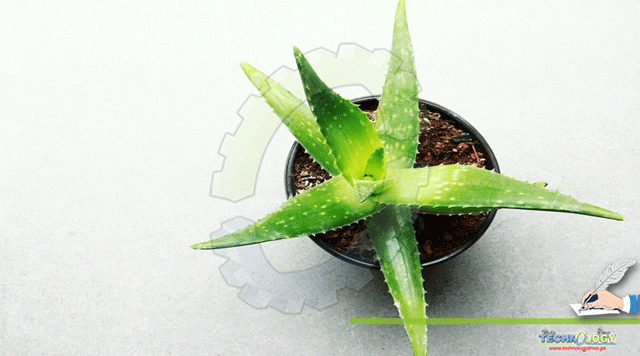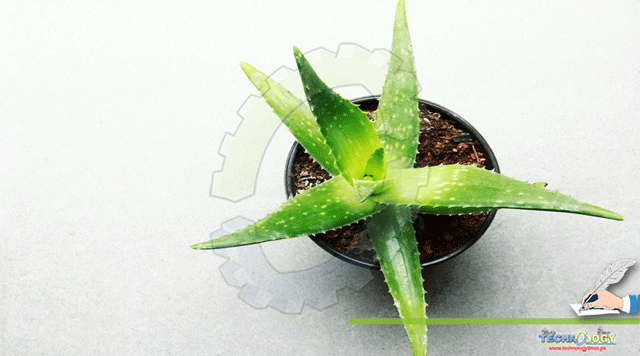Aloe vera contains 75 potentially active constituents: vitamins, enzymes, minerals, sugars, lignin, saponins, salicylic acids, and amino acids.

Aloe vera is a natural product that is now frequently used in the field of cosmetology. Though there are various indications for its use, controlled traits are needed to determine its real efficacy. The aloe vera plant, its mechanism of action, and various medicinal or clinical uses are discussed.
The aloe vera plant has been known and used for centuries for its health, beauty, medicinal, and skin care properties.
The word aloe is derived from the Arabic word “Alloeh,” meaning “shining bitter substance,” while vera in Latin means “true.” 2000 years ago, Greek scientists regarded aloe vera as the universal panacea. The Egyptians called Aloe “the plant of immortality.” Today, the aloe vera plant has been used for various purposes in dermatology.
Active components with their properties:
Aloe vera contains 75 potentially active constituents: vitamins, enzymes, minerals, sugars, lignin, saponins, salicylic acids, and amino acids.
- Vitamins: It contains vitamins A (beta-carotene), C and E, which are antioxidants. It also contains vitamin B12, folic acid and choline. Antioxidant neutralizes free radicals.
- Enzymes: It contains 8 enzymes: aliases, alkaline phosphatase, amylase, Brady kinase, carboxypeptidase, catalase, cellulose, lipase and peroxidase. Brady kinase helps to reduce excessive inflammation when applied to the skin topically, while others help in the breakdown of sugars and fats.
- Minerals: It provides calcium, chromium, copper, selenium, magnesium, manganese, potassium, sodium and zinc. They are essential for proper functioning of various enzyme systems in different metabolic pathways and few are antioxidants.
- Fatty acids: It provides 4 plant steroids; cholesterol, camp sterol, lupeol and β-sisosterol. All these have anti-inflammatory action and lupeol also possesses antiseptic and analgesic properties.
- Hormones: Auxins and gibberellins that help in wound healing and have anti-inflammatory action.
- Anthraquinones: It provides 12 anthraquinones, which are phenolic compounds traditionally known as laxatives. Aloin and emodin act as analgesics, antibacterial and antivirals.
- Others: It provides 20 of the 22 human required amino acids and 7 of the 8 essential amino acids. It also contains salicylic acid that possesses anti-inflammatory and anti-bacterial properties. Lignin, an inert substance, when included in topical preparations, enhances penetrative effect of the other ingredients into the skin. Saponins that are the soapy substances form about 3% of the gel and have cleansing and antiseptic properties.
Clinical Uses:
The clinical uses of aloe vera are supported by anecdotal data. Though most of these uses are interesting, controlled trials are essential to determining their effectiveness in all the following diseases.
Uses based on scientific evidence: These uses have been tested in humans or animals. Safety and effectiveness have not always been proven.
Conditions: seborrheic dermatitis, psoriasis vulgaris, genital herpes, skin burns, diabetes (type 2), HIV infection, cancer prevention, ulcerative colitis, wound healing, pressure ulcers, mucositis, radiation dermatitis, acne vulgaris, lichen planus, frostbite, pathos stomatitis, and constipation.
Uses based on tradition or theory: The below uses are based on tradition or scientific theories. They have often not been thoroughly tested in humans, and safety and effectiveness have not always been proven.
Conditions:
Alopecia, bacterial and fungal skin infections, chronic leg wounds, parasitic infections, systematic lupus erythematosus, arthritis, and tic doulourux
Medicinal uses:
- It contains healthful plant compounds.
- It has antioxidant and antibacterial properties.
- It accelerates wound healing.
- It reduces dental plaque.
- It helps to treat canker sores,
- It reduces constipation.
- It may improve skin and prevent wrinkles.
- It reduces blood sugar levels.
Conclusion:
Aloe vera is a medicinal plant, and due to its extensive medicinal, nutraceutical, and other uses, it enjoys great demand in the market across the globe. Given the exponentially growing demand for it in the international market. Aloe vera presents the finest commercial opportunity among the various medicinal plants.
